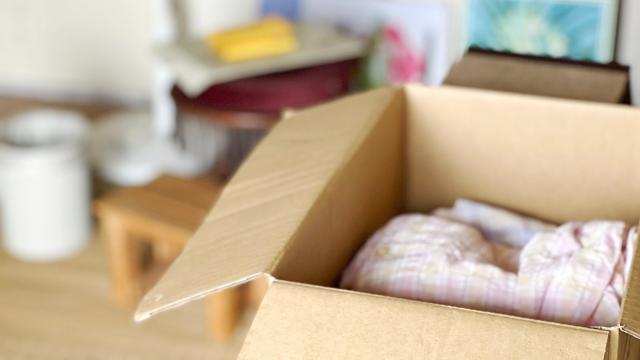I had a friend who once lived in a small, run-down apartment in Manhattan that was infested with roaches. When she moved out, she told me she had to inspect just about everything she owned because the nightmarish bugs were literally everywhere. (That was, understandably, the main reason she was moving in the first place.) If you’re moving out of a place that’s slowly filling up with roaches, bedbugs, moths, or other pests, you obviously don’t want to repeat the experience. To avoid moving a civilisation of insects with you, here’s what you can do.
A list of places to check for roaches
Your first step is to check everything. Roaches and other pests can hide just about anywhere — that’s how they seem to appear out of nowhere. If you just pack up all your stuff without doing any due diligence, you’ll almost certainly be acting as a Roach Uber. Before packing a thing, check:
- Books. If you have a home library, shake out every book before you pack it. Believe it or not, if you have roaches, you may very well find some in there.
- Appliances. Roaches (and other bugs) love the heat and darkness of appliances, even ones you might think weren’t too hospitable. Toasters, ovens, microwaves — check them all if you’re taking them with you. This could involve a flashlight and some light disassembly.
- Devices. Bugs love your laptops, desktops, and other devices for the same reason they love your kitchen appliances — darkness and heat. Just be prepared for an explosion of horror if you yank the case off of a roach-infested desktop.
- Picture frames. Bugs sometimes make camp behind your pictures because they offer a calm, dark spot that is rarely disturbed.
- Potted plants. Potted plants — and the bags of potting soil you use for them — are ideal homes for a lot of bugs. If you absolutely must transport your houseplants to your new home, inspect them very, very carefully and repot as needed — using fresh soil.
- Furniture. When was the last time you lifted a couch cushion? The couches and loveseats you sit on every day might be harbouring an army of stealthy pests. Before loading them into the truck, lift every cushion and look carefully.
- Clothes and closets. Got moths? If you’ve ever seen a small brown moth flitting about your home, you might be surprised to discover what’s lurking in your closets. Killing the adults won’t do much (aside from some grim revenge for your ruined clothes) — you’ll need to dry clean, bake, or freeze all of your clothes, then pack them into airtight bags before transporting them.
- Mattresses. If you have bedbugs then you’re probably (very) aware of the fact, but it’s a good idea to check your mattress either way. Remove the linens and lift that sucker up and take a good look for the tell-tale signs. Alternatively, if you can afford it, toss your old mattress and start fresh at your new place.
- Moving boxes. If you have assembled a billion cardboard boxes for your move, be careful. Roaches, for one, love them — they have seams and folds to hide in, and the glue used in their construction is delicious. Inspect every box before you pack anything in it — this is especially true if you saved a few dollars by grabbing boxes from local businesses or if you’re re-using boxes that have been sitting in your basement for years.
- Pet food. Pet food can be a perfect hiding spot for bugs, as those half-empty bags provide both shelter and nutrition. The safest thing to do is to just toss it all, but you can alternatively pack all that kibble into airtight containers for the trip — after making sure there are no surprises in there.
Concerning those cardboard boxes — yes, they’re cheap and plentiful, but if you can swing it a much better choice for moving your possessions is a sealable plastic container. This will ensure that once you’ve certified something as pest-free, it will stay that way.
Clean everything
After checking for infestations, the next step is to clean everything. And I mean everything. You’re waging a war here, this is not time to slack off or get lazy. Wash or dry clean all your clothes (on hot, unless the label says otherwise) and immediately pack them into plastic containers. Run the dishwasher (again, on the hottest setting) and pack your flatware and cooking utensils directly from the dishwasher — again, in plastic bins if you can.
Wash yourself — one of the last things you should do after packing up your stuff and cleaning an infested apartment or house you’ve been living in is to take a hot shower and change into fresh clothes. Pack the clothes you’ve been wearing in plastic (or wash them, or possibly burn them) and hit the road before anything can attach itself to you.
Pretreat your new house or apartment
Finally, once you’ve inspected, cleaned, and removed all your stuff and are as sure as you can be that nothing is hitching a ride with you to your new place, you should call an exterminator or at least perform a DIY pretreatment of your new space. Your new home will be empty and (presumably) clean, so this is a perfect opportunity to inspect it for signs of bugs, then apply insecticides to make sure they don’t come in after you’ve settled. With no furniture, dishware, or clothing in the way, you can get into the nooks and crannies and other hidden spots.
You might also consider a bedbug mattress cover, since you’re starting fresh. These can help prevent bedbugs from getting into your bedding in the first place, and since you just spent all that time and energy cleaning every aspect of your life, why not make it count?

Leave a Reply
You must be logged in to post a comment.